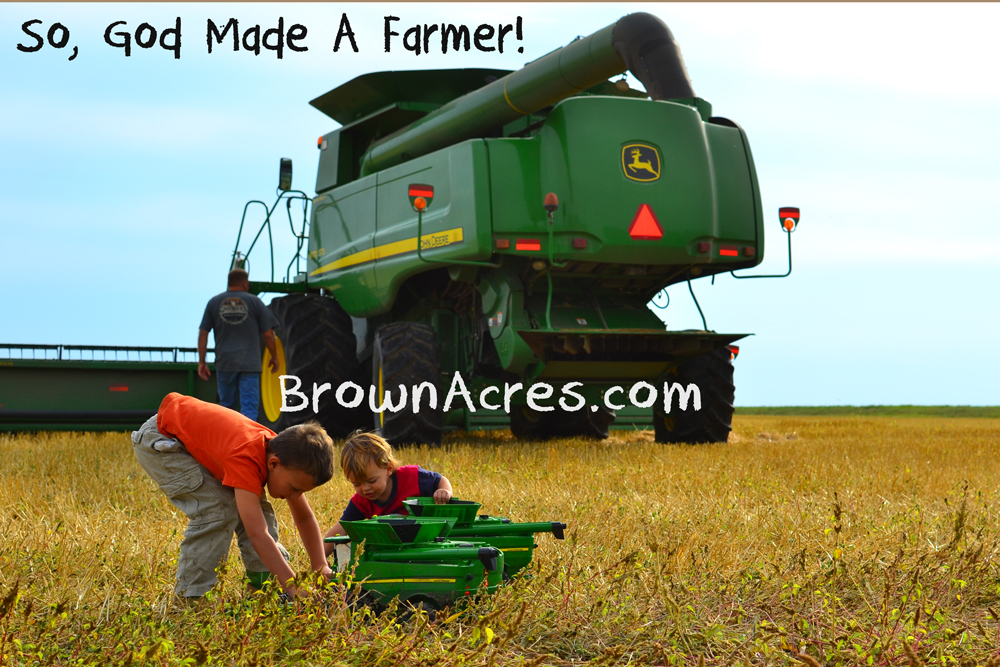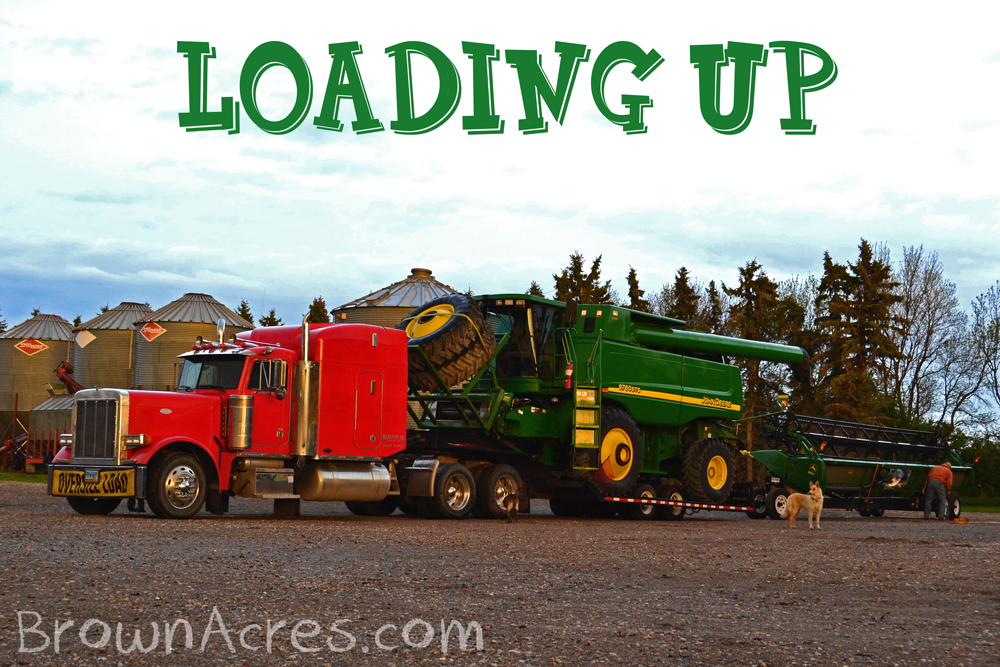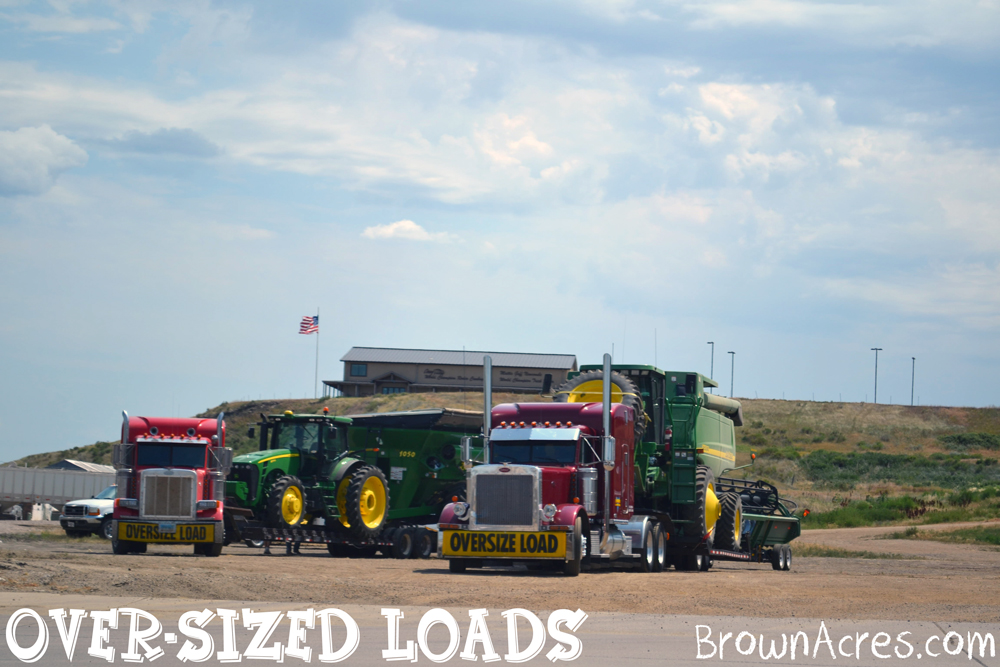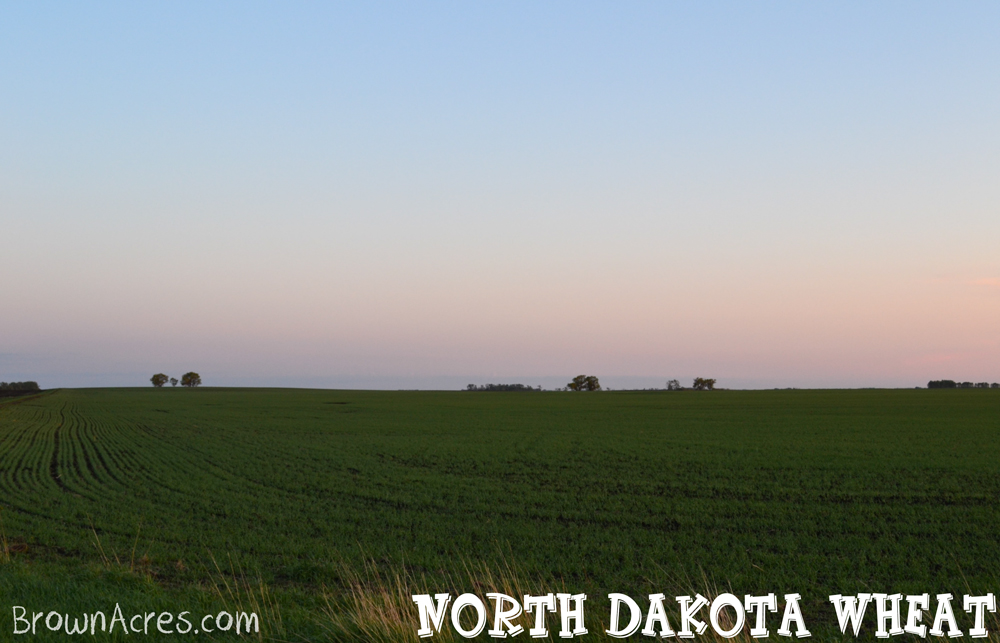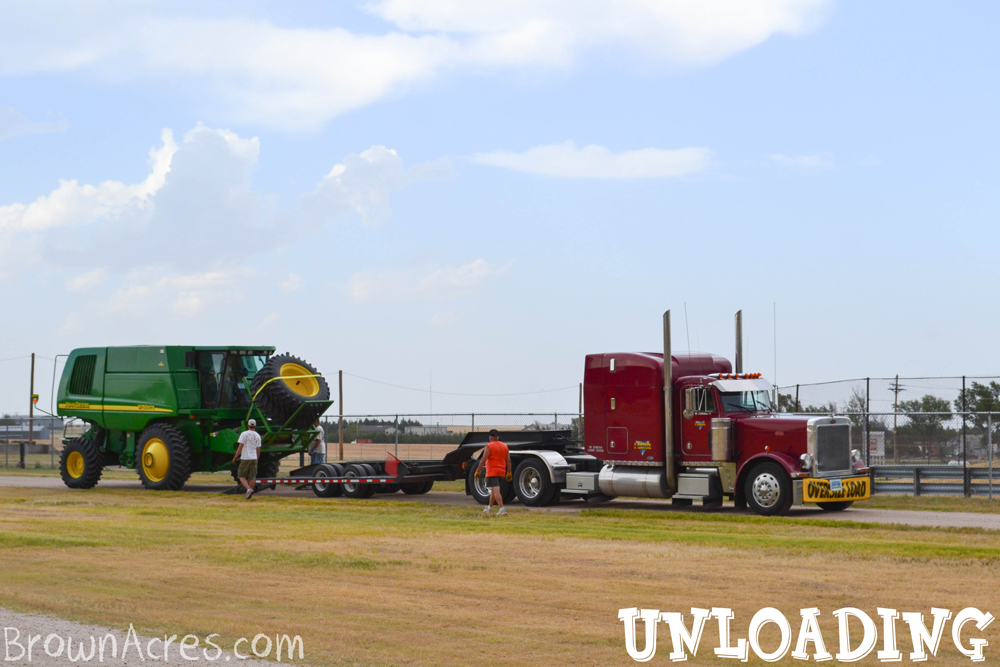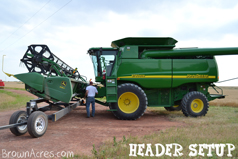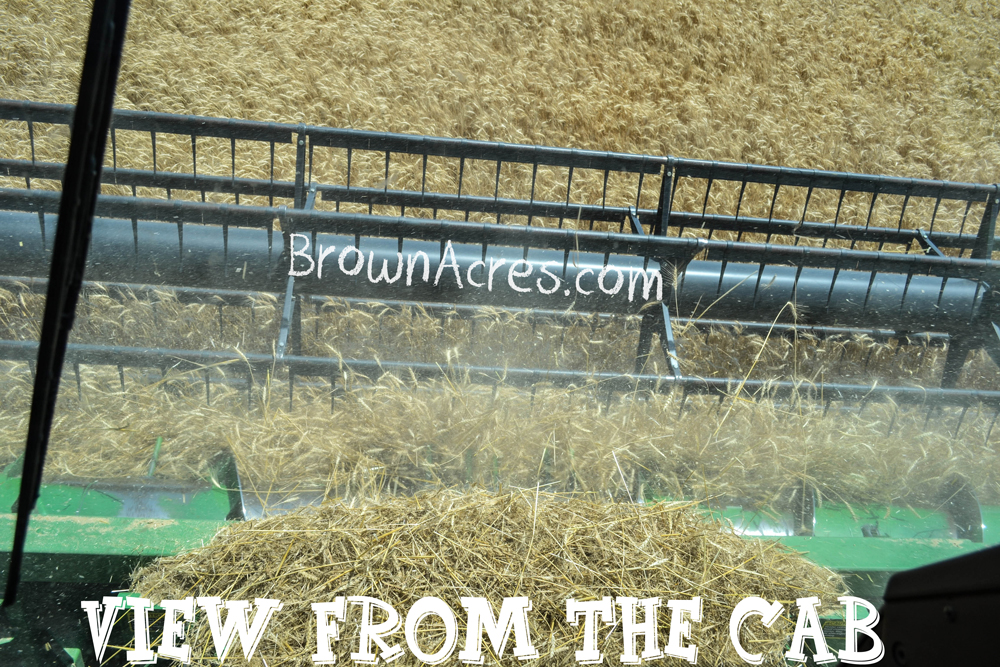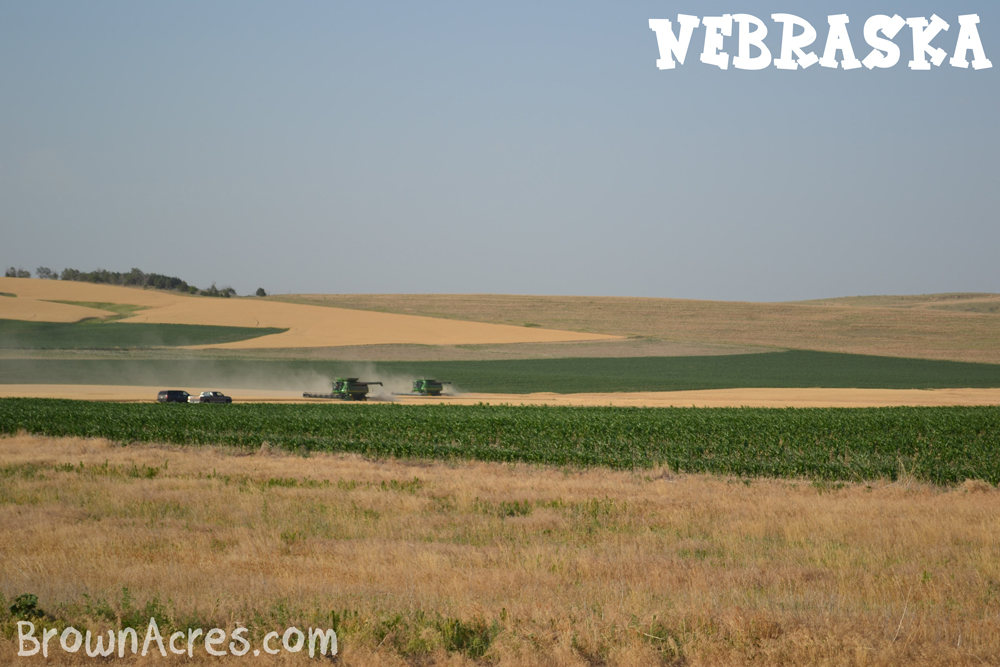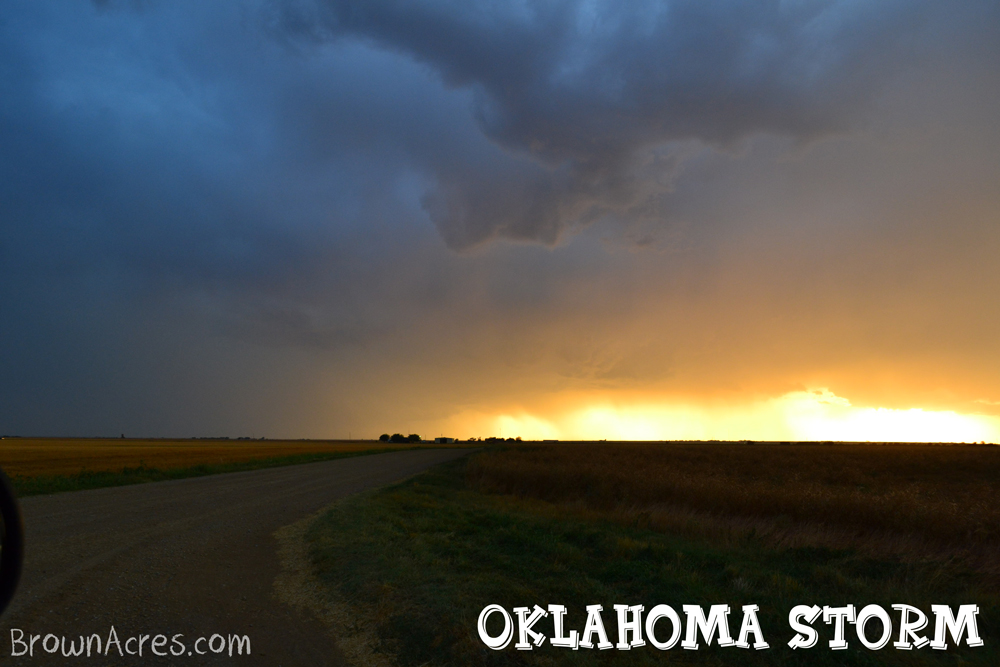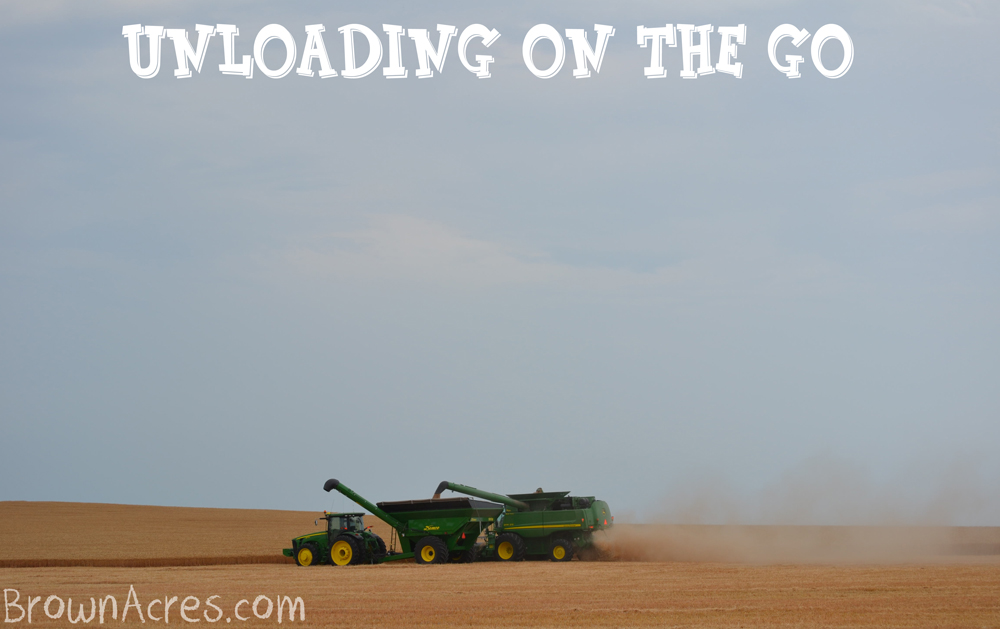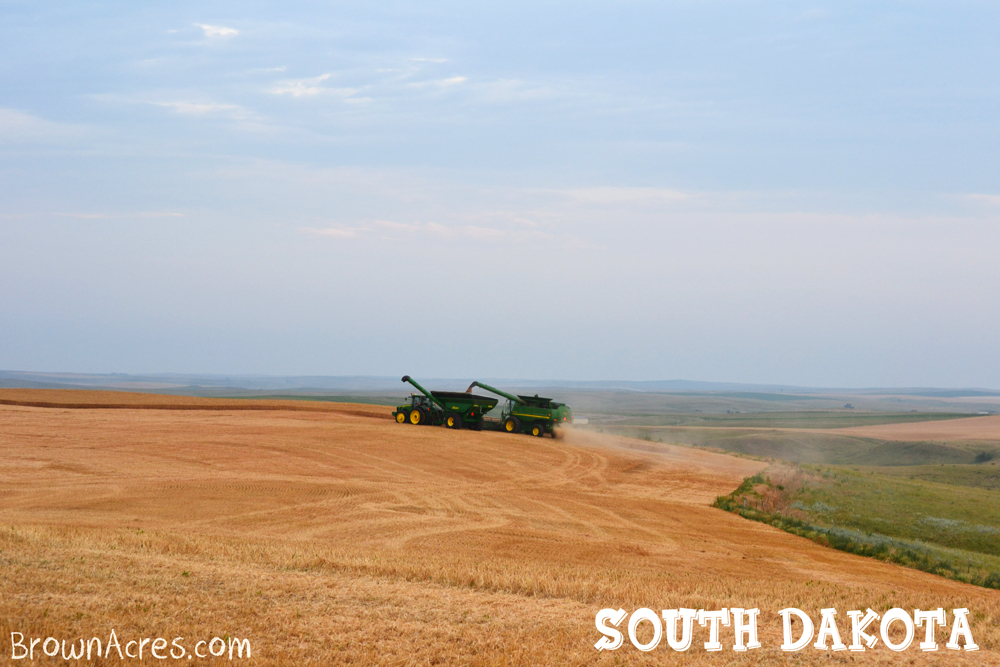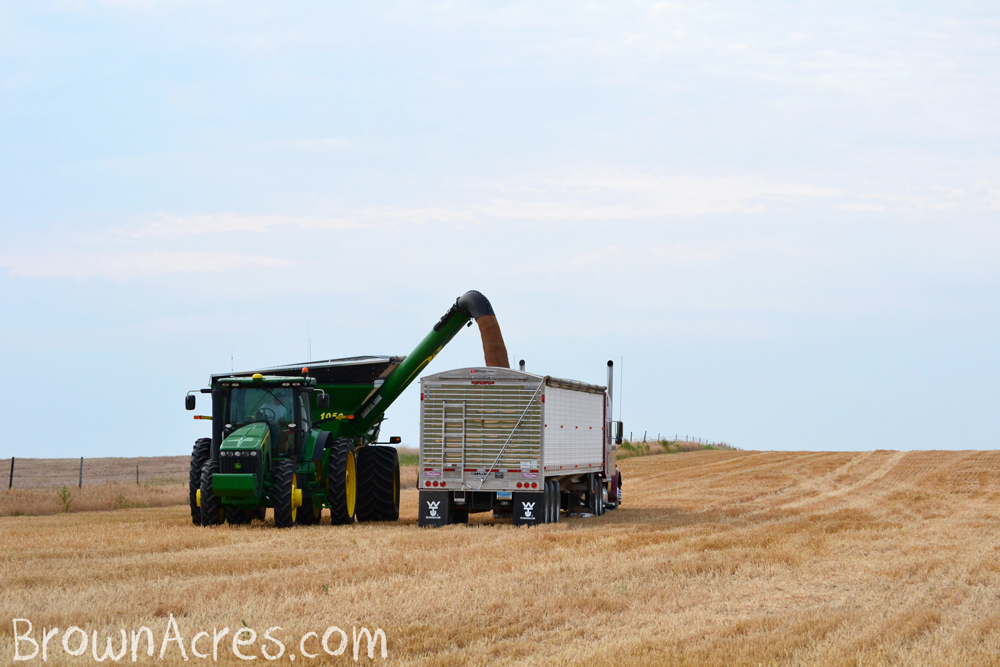In celebration of Ag Day 2014 I am writing about wheat for those who are not familiar with farming or custom harvesting. This will be the first in a series of crops throughout the year. I will write about flax and soybeans growing in our fields this season. Then I will write about other crops in our region such as potatoes, sugar beets, canola and barley.
Do you know how your flour reaches your pantry? Travel with me for a brief moment. Our journey begins in May. We are a small family owned custom harvesting crew. Harvest crews come in many sizes with many specialties. We load up our harvesting equipment which consists of combines, trucks, headers, service vehicles, campers, a tractor and a grain cart.
Our journey begins in North Dakota. The destination is Pond Creek, OK – 850 miles away. We have over-sized loads and long days on the road. Our caravan can only travel during day light hours. We will stay in our campers overnight at truck stops or even implement dealerships along the way. We are headed out for the harvest with safety in mind. The further south we go, the warmer it gets and the green crops have transitioned into ripening crops. After a couple of days we see amber waves of grain.
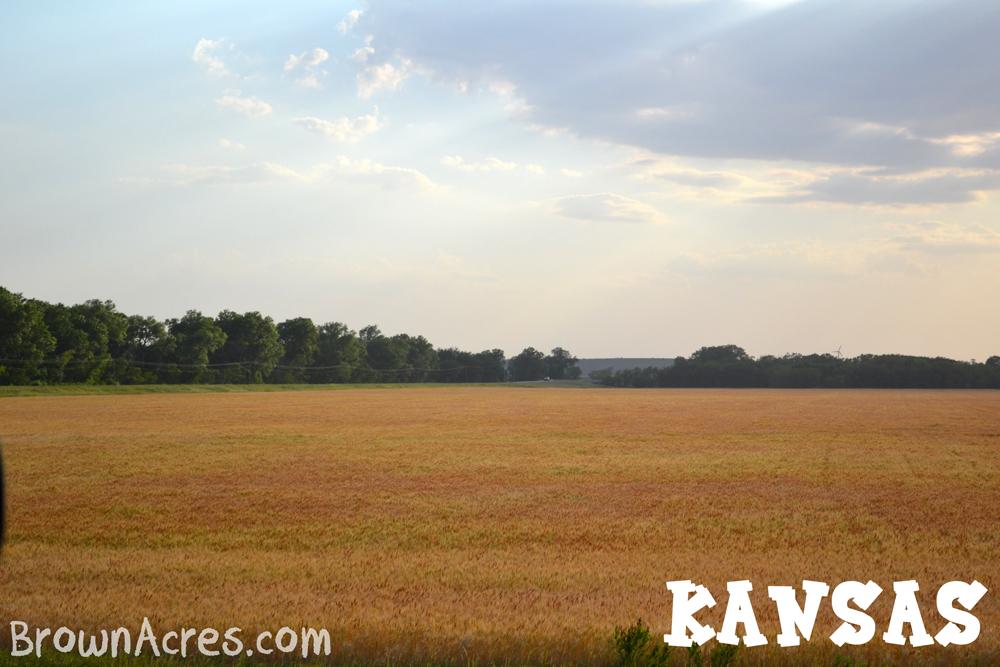
The harvest is imminent. Soon we will see dust in the air from combines and the sweet smell of harvest will fill the air. The anticipation is incredible! We will be eating most of our meals in the field. We have two-way radios in all the equipment for communication. Everybody on the team is important for the operation to run. We need to work as a team and we must be safe.
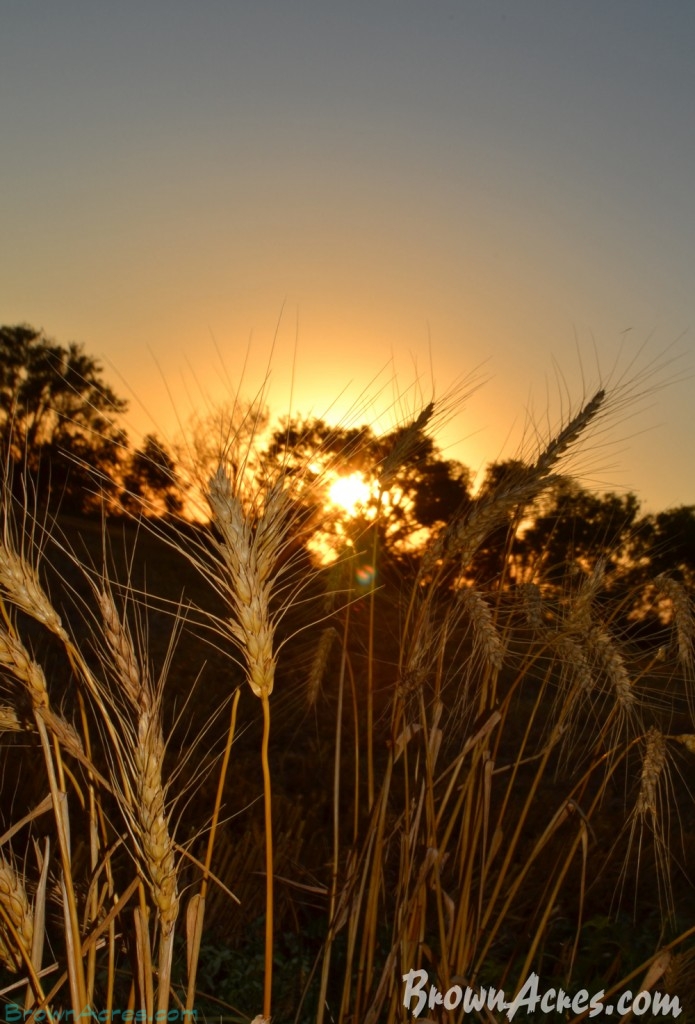 Farmers hire custom harvesters for various reasons. The cost of equipment and maintenance is a huge investment. Sometimes it is a better investment to have it hired out. Some farmers just need extra help and have their own equipment too. We are an intricate part of the crop production. The harvest brings together a network of businesses and people. The dealerships will have special harvest support trailers on location with extra parts to avoid breakdown delays. Small towns will have a population boom and an increase in farm equipment traffic. The elevators will be in full operation and the trains and trucks will be hauling the harvest away. The crop must come off in a timely manner. It has to be the proper moisture content or there will be deterioration of the crop. The crop could be too wet from overnight humidity or a recent rain could also affect harvest. Once we arrive at our destination, we will unload, setup and get to work cutting wheat.
Farmers hire custom harvesters for various reasons. The cost of equipment and maintenance is a huge investment. Sometimes it is a better investment to have it hired out. Some farmers just need extra help and have their own equipment too. We are an intricate part of the crop production. The harvest brings together a network of businesses and people. The dealerships will have special harvest support trailers on location with extra parts to avoid breakdown delays. Small towns will have a population boom and an increase in farm equipment traffic. The elevators will be in full operation and the trains and trucks will be hauling the harvest away. The crop must come off in a timely manner. It has to be the proper moisture content or there will be deterioration of the crop. The crop could be too wet from overnight humidity or a recent rain could also affect harvest. Once we arrive at our destination, we will unload, setup and get to work cutting wheat.
We prepare the combine for the wheat and the header is installed. There could be crop loss with the wrong settings. The wheat heads could be thrown over the header, not cut low enough or thrown out the back. The farmers have a huge investment in the crop by the time harvest arrives. We harvest the field for a sample of wheat. Today we are straight cutting the wheat with a straight head. This means it is not swathed first. The wheat is cut at the front of the header then it goes into the feeder house which takes it to the rotor inside the combine.
The rotor removes the wheat kernel from the head and straw. The straw is then moved to the back of the rotor. It goes back into the chopper where it is cut up and spread out onto the field. The wheat goes onto the sieves for separation from the chaff and then into the grain tank. The sample is tested for moisture content. The sample is usually taken to the elevator since ultimately they decide if it is dry enough. Once it is ready we harvest the crop.
We do what it takes to get the crop off – that could mean harvesting until 2 a.m. if a storm is in the forecast. Mother nature could greatly affect the harvest.
 The longer the crop is left standing the greater the risk of crop loss. There are no days off during harvest. Even when it rains there are repairs and improvements to be made. Breakdowns are costly and down time needs to be minimal.
The longer the crop is left standing the greater the risk of crop loss. There are no days off during harvest. Even when it rains there are repairs and improvements to be made. Breakdowns are costly and down time needs to be minimal.
The combines are unloaded on the go when the tractor and grain cart pull up alongside the combine.
The tractor then delivers the load to the truck.
When the truck is full, it leaves for the elevator or the farmers’ bins.
Once the load has been delivered to the elevator it goes into storage. Usually the elevator will have a train come in to haul the wheat away. The wheat could potentially end up on a barge for overseas shipment or to a local processing mill.
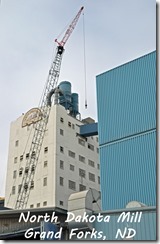 In North Dakota we have The North Dakota mill please visit their website for tour photos and more information. The North Dakota Mill and Elevator Association is the only state-owned milling facility in the United States. The ND Mill processes the wheat according to specs for industrial bakers, restaurants and retail sales. The wheat could be used for bread flour, bagels, pizza crust, or even tortillas. The ND Mill ships mainly to the Chicago area and the east coast. Occasionally the flour is even exported to places such as Korea or Japan. We will follow the harvest north throughout the summer. Perhaps we will see you along the way!
In North Dakota we have The North Dakota mill please visit their website for tour photos and more information. The North Dakota Mill and Elevator Association is the only state-owned milling facility in the United States. The ND Mill processes the wheat according to specs for industrial bakers, restaurants and retail sales. The wheat could be used for bread flour, bagels, pizza crust, or even tortillas. The ND Mill ships mainly to the Chicago area and the east coast. Occasionally the flour is even exported to places such as Korea or Japan. We will follow the harvest north throughout the summer. Perhaps we will see you along the way!
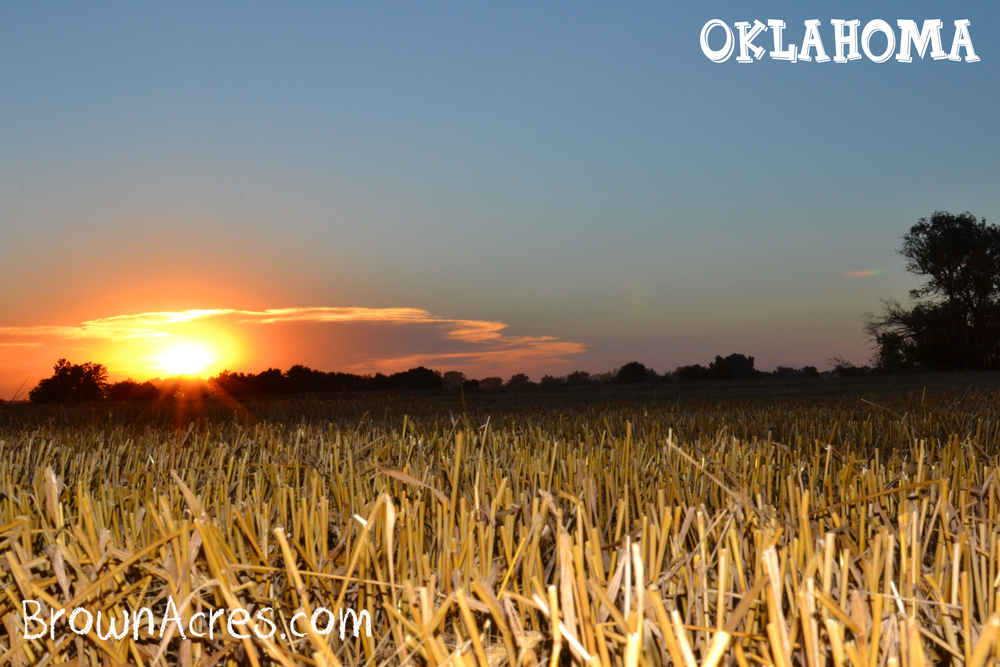
For more information please visit US Custom Harvesters, Inc Keep the conversation going by talking to your local farmers.

